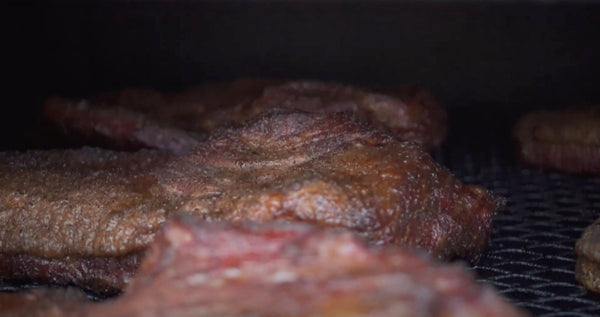
How to Cook Barbecue for Large Groups: Expert Tips from Mad Scientist BBQ
Getting Barbecue Right for Big Gatherings
Cooking barbecue for a large group can be challenging, especially when handling multiple types of meat. Jeremy Yoder from Mad Scientist BBQ combines his background in biology and chemistry with extensive experience at the smoker to provide tips that ensure meats are cooked perfectly and on time.
Planning Your Cook: Timing Is Everything
Determining when the food needs to be ready is the first essential step. A good practice is to schedule the food to be done about one hour ahead of time, allowing a buffer in case any issues arise.
For example, if serving at noon on a Saturday, begin cooking at noon the previous day. This schedule allows for better results without last-minute rushes.
Staggering the Meats on the Smoker
-
Briskets: Start first, positioned in the coolest part of the smoker (around 225°F–275°F). Briskets require the longest cooking time to absorb smoke and develop tenderness.
-
Pork Butts: Begin cooking about three hours after the briskets. They need long cooking and resting times but slightly less than briskets.
-
Beef Ribs: Put on about an hour following pork butts, as they require less time (roughly four hours less than brisket).
-
Pork Ribs: These can be cooked later, ideally overnight before the event, allowing them to rest well.
Resting and Reheating for Optimal Flavor
Resting meat is critical. For best tenderness and flavor, briskets and pork butts should rest 8 to 12 hours.
To maintain safe temperatures, meat can be held in a warming oven or cooler at 140°F to 160°F. Avoid overheating, as this can cause texture deterioration. Before serving, gently reheat as needed.

Chicken Must Be Cooked Fresh
Unlike other meats, chicken should not be cooked the day before. It must be cooked fresh on the event day to preserve texture and flavor.
Cooking chicken while reheating other meats maximizes efficiency and wood consumption.
Sample Cooking Timeline for Noon Service
-
Friday Noon: Start briskets
-
Friday 3 PM: Add pork butts
-
Friday 4 PM: Add beef ribs
-
Friday 7:30 PM: Add pork ribs
-
Around 2 AM: Remove all meats and rest in warming oven or cooler
-
Saturday 9:30 AM: Cook chicken (approx. 90 minutes)
-
Saturday Noon: Ready to serve
Key Tips for Large Group Barbecue Cooking
-
Cook meats requiring the longest time first.
-
Stagger meats on the smoker based on cook durations.
-
Use warming equipment or coolers to keep meat at safe temperatures during resting.
-
Maintain meat between 140°F and 160°F to avoid texture loss.
-
Cook chicken last for optimal freshness.
-
Develop a thorough cooking timeline to avoid last-minute pressure.
Conclusion
With proper timing, resting, and reheating, cooking barbecue for large groups can be well-managed, yielding juicy, smoky meats that satisfy every guest comfortably.
---
About the Author
Jeremy Yoder — Mad Scientist BBQ
Based in Kentucky, Jeremy Yoder combines knowledge from biology, chemistry, and extensive smoking experience to explain barbecue techniques, debunk myths, and guide readers toward success in low-and-slow cooking.
Connect with Mad Scientist BBQ
Twitter: twitter.com/madscientistbbq
Instagram: instagram.com/madscientistbbq
Facebook: facebook.com/madscientistbbq
